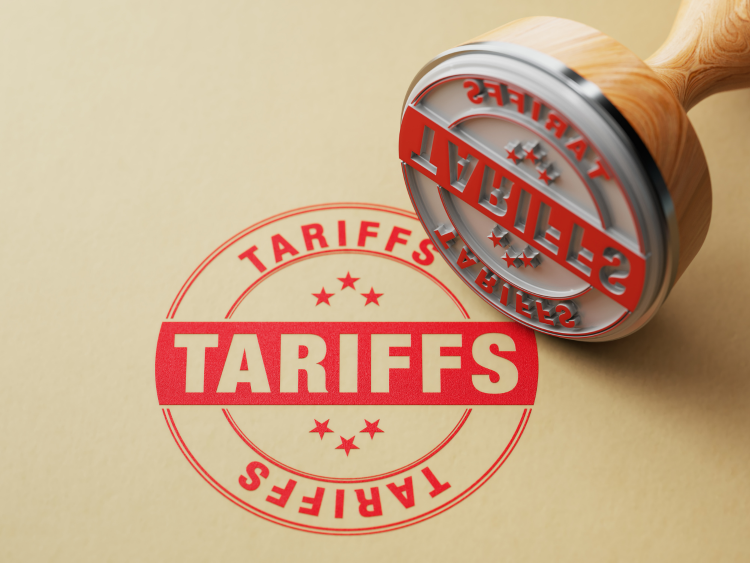
The luxury goods market is a dynamic realm continually shaped by the desires and aspirations of affluent consumers. This article delves into the multifaceted aspects of this market, scrutinizing the preferences, motivations, and expectations of high-net-worth individuals. A comprehensive understanding of these elements is paramount for businesses within the luxury sector, enabling them to meticulously tailor products and devise marketing strategies that resonate with their discerning clientele. By exploring the intricacies of consumer behavior, businesses can position themselves strategically in this competitive landscape, ensuring sustained relevance and success. In essence, the evolving nature of the luxury goods market necessitates a nuanced approach, wherein businesses adapt and align with the ever-changing landscape to meet the heightened expectations of their affluent customer base.
1. The Shifting Landscape of Luxury Goods
The luxury goods market has experienced notable transformations, shaped by evolving consumer behaviors, emerging trends, and global economic shifts in recent years. These dynamics underscore the need for businesses in the luxury sector to adapt swiftly to changing market conditions to maintain relevance and meet the expectations of discerning consumers.
1.1 Introduction to Market Dynamics
The luxury goods market operates within a dynamic framework influenced by a multifaceted interplay of factors. Socio-economic trends, cultural shifts, and technological advancements intricately shape its dynamics. Brands aiming for success in this competitive landscape must possess a keen awareness of these influences. Socio-economic trends dictate consumer purchasing power, cultural shifts impact lifestyle preferences, and technological advancements redefine the consumer experience. Navigating this complex environment demands a nuanced understanding of the evolving interconnections between these elements. Brands that grasp these dynamics can strategically position themselves, adapting to changing consumer expectations and maintaining a competitive edge. Ultimately, recognizing the intricate interplay of socio-economic, cultural, and technological factors is imperative for luxury brands aspiring to thrive in an ever-evolving and competitive market.
1.2 Globalization and Market Expansion
The globalization of markets has profoundly transformed the landscape for luxury brands, extending their reach to a wider audience. This expanded accessibility necessitates a nuanced examination of its impact on consumer preferences and brand perception. As luxury goods become more globally available, businesses must strategically assess the implications for maintaining the delicate equilibrium between exclusivity and accessibility. The challenge lies in crafting a market approach that preserves the prestige and allure associated with luxury while catering to a broader demographic. Analyzing how globalization influences consumer preferences provides valuable insights for businesses seeking to strike the right balance. Successfully navigating this intersection allows luxury brands to harness the opportunities presented by a global market while safeguarding the exclusivity that defines their identity, thereby ensuring sustained appeal and relevance on a worldwide scale.
2. Profiling the Affluent Consumer
Effectively catering to the luxury market requires a profound understanding of affluent consumers. This entails a comprehensive exploration of their demographics, psychographics, and the decisive factors influencing their purchasing decisions. By delving into these aspects, businesses can tailor their strategies to align precisely with the preferences and motivations of their high-net-worth clientele.
2.1 Demographic Factors
Examining the demographic characteristics of affluent consumers offers crucial insights for luxury brands. Analyzing age groups, income levels, and geographic locations provides a strategic understanding of the most lucrative markets. This detailed examination allows businesses to tailor products and marketing approaches to specific demographics, ensuring relevance and resonance with their target audience. By pinpointing the key demographic segments, luxury brands can optimize their resources, design targeted campaigns, and enhance customer engagement. Ultimately, this demographic scrutiny is instrumental in crafting a tailored and effective strategy that maximizes the appeal and profitability of luxury goods in specific markets.
2.2 Psychographic Analysis
Delving into the psychographic aspects is essential for uncovering the nuanced lifestyle choices, values, and aspirations of affluent consumers. This profound understanding serves as a cornerstone for crafting products and marketing campaigns that authentically resonate with their desires. By exploring the psychological and emotional dimensions that influence consumer behavior, businesses can align their offerings with the intricate preferences and aspirations of their high-net-worth clientele. This insight enables the creation of compelling narratives and experiences, fostering a deeper connection between luxury brands and their discerning audience, ultimately enhancing brand loyalty and ensuring sustained relevance in the competitive landscape of upscale consumer markets.
3. The Role of Exclusivity in Luxury Branding
Exclusivity stands as a cornerstone in luxury branding, playing a pivotal role in shaping consumer perceptions. Understanding its significance is paramount for success in the luxury market, where the aura of exclusiveness not only defines brand identity but also influences the perceived value and desirability of luxury goods.
3.1 Crafting Exclusive Experiences
Luxury brands extend beyond tangible products, crafting exclusive experiences to augment their allure. Exploring the strategies employed in creating these unique encounters unveils the intricate dynamics of consumer-brand relationships. By providing exclusive experiences, brands establish emotional connections, fostering a sense of belonging and prestige. This not only enhances brand loyalty but also elevates the perceived value of the entire brand offering. Understanding these strategies is instrumental for luxury businesses, as they navigate the terrain where the intangible aspects of the brand, such as personalized services and curated events, contribute significantly to the overall consumer perception and satisfaction.
3.2 Balancing Exclusivity and Accessibility
Achieving the delicate balance between exclusivity and accessibility is an art in the realm of luxury branding. This equilibrium is crucial for sustaining brand desirability while reaching a broader audience. Analyzing case studies and industry trends becomes a valuable compass for understanding how successful luxury brands master this challenge. Insights derived from these examinations illuminate the strategies employed to maintain an aura of exclusivity, uphold brand prestige, and simultaneously broaden market accessibility. This strategic approach allows luxury brands to navigate the fine line between catering to a discerning clientele and adapting to the evolving dynamics of consumer expectations and market demands.
4. Emerging Trends in Luxury Consumption
The luxury goods market is dynamic, evolving alongside shifting consumer preferences and societal changes. Staying relevant in this competitive landscape necessitates a keen awareness of emerging trends. Identifying and adeptly adapting to these trends is paramount for luxury brands, ensuring they remain attuned to the evolving demands of their discerning clientele.
4.1 Sustainability and Ethical Consumption
A heightened consumer consciousness regarding environmental and ethical issues has spurred adaptation in luxury brand practices. Examining the intersection of sustainability and luxury consumption reveals both opportunities and challenges for businesses in this space. As consumers increasingly prioritize ethical considerations, luxury brands embracing sustainable practices not only align with evolving values but also position themselves for positive brand perception. However, navigating the complexities of sustainability in the luxury sector presents challenges, necessitating thoughtful strategies to harmonize opulence with eco-conscious choices.
4.2 Digital Transformation in Luxury Retail
The digital landscape has disrupted traditional retail, compelling luxury brands to embrace e-commerce and digital platforms. Understanding the implications of this digital transformation on consumer behavior is imperative for crafting effective online strategies. As consumers increasingly turn to online channels for luxury purchases, brands need to align their digital presence with the expectations of a tech-savvy audience. This shift underscores the importance of seamlessly integrating online and offline experiences, ensuring a cohesive and captivating digital journey for consumers in the competitive realm of luxury retail.
5. Marketing Strategies for Luxury Brands
Reaching and engaging affluent consumers demands nuanced marketing strategies tailored to the distinctive features of the luxury goods market. Successfully connecting with this discerning audience requires a sophisticated approach that reflects the exclusivity, aspirations, and refined tastes associated with luxury brands, ensuring resonance and impact in the competitive marketplace.
5.1 Influencer Partnerships and Brand Ambassadors
Collaborations with influencers and brand ambassadors play a pivotal role in shaping the image of luxury brands. Analyzing successful partnerships offers valuable insights into leveraging personalities to enhance brand perception. By strategically aligning with influential figures whose values resonate with the brand, luxury businesses can not only extend their reach but also create authentic connections with their target audience. These collaborations amplify the aspirational and exclusive qualities of the brand, contributing significantly to overall brand positioning and consumer engagement.
5.2 Omni-Channel Marketing Approaches
The integration of online and offline channels is paramount in the luxury sector. Exploring successful omni-channel marketing approaches is essential for brands to create a seamless and cohesive consumer experience. As consumer journeys span various touchpoints, an effective omnichannel strategy ensures consistency and sophistication across both digital and physical platforms. By synchronizing online and offline interactions, luxury brands can cultivate a unified brand identity, enhance customer engagement, and cater to the evolving expectations of discerning consumers in the competitive landscape of upscale retail.
6. Conclusion: Navigating the Future of Luxury Goods
In conclusion, the luxury goods market is a dynamic and ever-evolving landscape, requiring a profound understanding of affluent consumers' aspirations and preferences. Brands that adeptly adapt to emerging trends, preserve exclusivity, and implement effective marketing strategies are poised to thrive in this competitive arena. Continuous research and comprehension of shifting dynamics empower businesses to position themselves at the forefront of the luxury goods market. By staying attuned to evolving consumer expectations and industry trends, brands can not only meet the heightened demands of their discerning clientele but also sustain a prominent and influential presence in the dynamic and ever-changing luxury market.
Trending Posts

Global Silver Nanoparticles Market
The global silver nanoparticles market was valued at $2.08 billion in 2020, and is projected to reach $4.1 billion by 2027, growing at a CAGR of ~17%

The Basic Pension Comes - Federal Cabinet Decides On the Pension Supplement
Financial security in old age is an issue that is causing stomach pains for more and more people in Germany. Low-wage earners fear the elderly. The ba

The Future of Artificial Intelligence
In recent years, the field of artificial intelligence (AI) has witnessed unprecedented growth and transformative advancements. As AI technologies

"LNG Bunkering" Here is something you must know!
In the current scenario of growing pollution, companies are trying to adapt more and more sustainable approach that not only gives eco-friendly result

Sailing into the future with Autonomous Ships
Autonomous Vehicles (AVs) are the uproar of this era. After airways, thanks to the companies like Tesla, that people are now getting used to see drive

Rising Demand For Uninterrupted Power Supply Is Expected To Drive The Power Rental Market
Todays world is totally reliant on electric power. There are many things which are not manageable without electricity. Power rental is a concept where

Rapidly growing IT industry coupled with the trend of bringing your own device (BYOD) is expected to provide new opportunities for growth of Cloud Collaboration
Cloud collaboration is the process of sharing and co-authoring the computer-based work through cloud technology

Fact check on UV Disinfection for COVID-19
Many regulatory authorities and bodies believe that UV disinfection technologies can play a role in a multiple barrier approach to reducing the transm

Vaccination: Vaccination Against Measles is Now Mandatory in Germany
The subject of compulsory vaccination has always heated peoples minds and caused emotionally charged discussions. The latest law in this area - the ob

The Global Ventilator Market Grows at a CAGR of 7.75 %
The Global Ventilator Market, which was at $688 million in the year 2016, is about to double by the year 2025, and reach a value of $1,347 million. Th
Recent Posts

Tariffs & Trade: Key Trends, Policies, and Market Impact
A tariff is a tax imposed by a government on imported or exported goods. It is primarily used to regulate international trade by either encouraging domestic production or generating revenue for the government.

The Global Buy Now Pay Later (BNPL) Market: Growth and Opportunities
The global Buy Now Pay Later (BNPL) market has emerged as a revolutionary financial solution, transforming how consumers approach shopping and payments. Offering flexibility and convenience, BNPL allows consumers to make purchases and pay.

Global Motorhome Market: Growth and Forecast
The motorhome market has gained significant momentum over the past decade, driven by rising interest in outdoor tourism, evolving consumer lifestyles, and advancements in vehicle design and technology. As a preferred option for travelers seeking.

The Global Poppy Seed Market: Growth and Trends
Poppy seeds, derived from the opium poppy plant (Papaver somniferum), have been a vital component in global culinary, pharmaceutical, and personal care industries for centuries. The global poppy seed market is gaining traction due to its versatility.

Global Plant Breeding and CRISPR Plants Market
The global food industry is facing immense pressure due to rising population levels, diminishing arable land, and the impact of climate change. Innovations in plant breeding, particularly the use of CRISPR technology, are reshaping the agricultural .

Global Pheromones Market – Trends, Opportunities, and Forecast
The global pheromones market has witnessed significant growth, primarily driven by the rising demand for eco-friendly pest control solutions in agriculture. Pheromones, natural chemicals emitted by insects and other organisms to communicate.

The Role of Technology in Oil and Gas Risk Management
In an industry as dynamic and complex as oil and gas, risk management is crucial for ensuring operational efficiency, regulatory compliance, and safety. Risk management software has become an indispensable tool for companies in this sector.

Global Smart Grid Sensors Market
The global energy landscape is undergoing a significant transformation, with smart grid technologies at the forefront. Smart grid sensors, a critical component of modern energy grids, enable efficient monitoring, energy distribution.

Global Photovoltaic Glass Market Research Report
The global photovoltaic (PV) glass market is experiencing unprecedented growth, driven by the accelerating shift towards renewable energy and the integration of sustainable materials in construction. This report delves into the market’s key growth.

Exploring the Growth of the Global Micro Solar Inverter Market
The Global Micro Solar Inverter Market is forecasted to expand significantly, growing from an estimated value of USD 4.8 billion in 2024 to USD 14.6 billion by 2030, with a CAGR of 24.2%. This growth reflects increased adoption of solar energy system
.png)